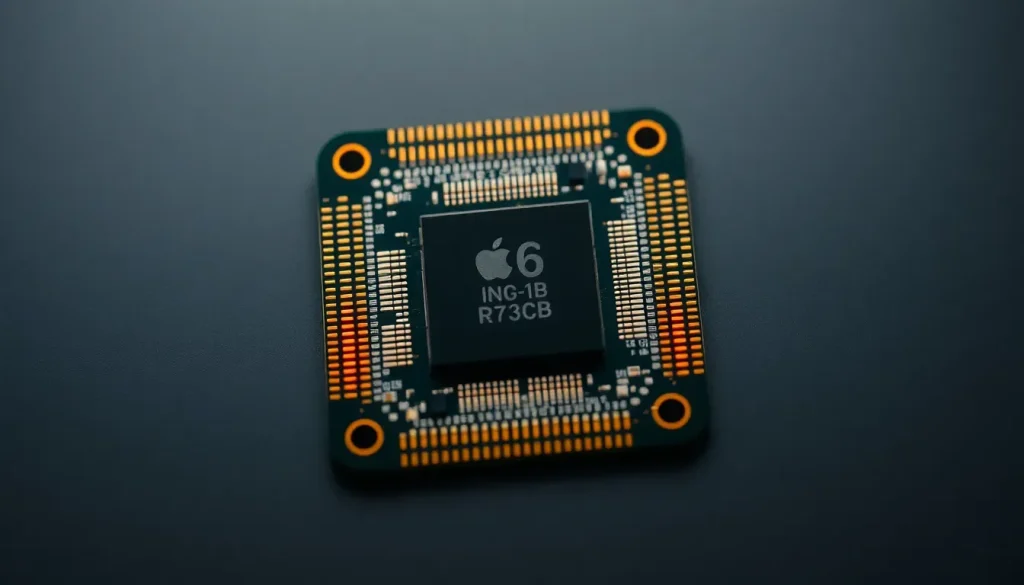Apple C2 5G Modem Will Use Older TSMC Process Next Year

Apple continues to innovate and evolve within the tech landscape, and one of its most anticipated developments is the upcoming C2 5G modem. As the company shifts towards manufacturing its own cellular modem chips, the implications for both Apple and the industry are substantial. This article delves into the specifics of the C2 modem, its manufacturing process, and what it means for future iPhone models.
Understanding the C2 5G modem and its manufacturing process
The C2 modem is set to be a significant shift for Apple, as it marks the company's deeper commitment to in-house hardware development. Set to be mass-produced on TSMC’s 4nm 'N4' process, this modem will not utilize the more advanced 2nm technology that other Apple chips, such as the A20 and A20 Pro, may feature. This decision raises questions about the technology's performance and efficiency.
Despite Apple securing a significant portion of TSMC's 2nm production capacity, the company appears to be opting for the older 4nm process for its C2 modem. This choice could be influenced by several factors:
- Cost Efficiency: Using a well-established manufacturing process may reduce production costs significantly.
- Performance Needs: The current generation of modems may not require the latest lithography to operate effectively.
- Market Dynamics: The competition landscape may not necessitate cutting-edge technology in this segment.
Analyst Ming-Chi Kuo has pointed out that while cutting-edge technologies can offer benefits, they may not be essential for components like modems, which are not typically the most power-hungry parts of a smartphone. The return on investment for developing advanced modem technologies may also not justify the transition to more advanced processes.
Transitioning from Qualcomm to Apple’s own cellular modem chips
The impending shift to the C2 modem is expected to coincide with the launch of the iPhone 18 series, which will likely be the last lineup to utilize Qualcomm’s 5G modems. The transition to Apple’s in-house modems signifies a strategic move aimed at enhancing control over hardware and software integration, which could lead to improved performance and user experience.
Apple's journey towards developing its own modem chips began shortly after the announcement of the iPhone 16e, with the C2 modem slated for a 2026 release. The timeline suggests that Apple is methodically preparing to phase out its dependence on Qualcomm, solidifying its position as a competitive player in the modem space.
What sets the C2 modem apart?
One of the most noteworthy features of the C2 modem is its compatibility with both mmWave and sub-6GHz 5G networks. This dual support is crucial as it allows for:
- Wider Connectivity: Users can access more extensive 5G networks regardless of geographic factors.
- Improved Performance: Enhanced data speeds and reliability in various environments.
- Future-Proofing: A modem that is ready to handle evolving network technologies.
Moreover, while the C1 modem found in the iPhone 16e may have served its purpose, the advancements in the C2 are expected to provide significant upgrades that could enhance user experiences in the upcoming iPhone models.
The implications of using an older manufacturing process
Opting for the 4nm process instead of the latest technology raises questions about the long-term impacts on performance and competitiveness. However, it's essential to consider that:
- Incremental Improvements: The N4 process offers a 5% performance increase from the previous N5 node, alongside a 6% boost in transistor density.
- Strategic Focus: Apple may be prioritizing other aspects of its devices over modem performance, such as battery life and overall device integration.
- Market Readiness: It may be more beneficial to wait for the right moment to fully integrate newer technologies as the market adapts.
As the technology landscape evolves, it is crucial for companies like Apple to balance innovation with practical considerations to ensure that new products meet consumer needs effectively.
What can we expect in future iPhone models?
With the anticipated launch of the iPhone 18 series, including potentially a foldable model, the integration of the C2 modem is expected to drive improvements in connectivity and performance. Apple’s strategy appears to be focused on:
- Enhanced User Experience: With improved modems, users can expect faster download and upload speeds.
- Greater Device Integration: In-house modems allow for better synergy between hardware and software, potentially leading to more seamless updates and features.
- Competitive Edge: As Apple develops its technology, it could gain leverage against competitors who rely on third-party components.
Apple's continuous investment in modem technology illustrates its commitment to innovation and maintaining a leading presence in the competitive smartphone market.
For those interested in a deeper dive into Apple's modem journey and what to expect in 2025, check out this informative video:
As we approach the release of the iPhone 18 and the C2 modem, it will be fascinating to see how Apple's strategy unfolds and what it means for the future of mobile technology. The implications of these developments are vast, affecting not only Apple's product lineup but also the broader industry landscape and consumer connectivity experiences.




Leave a Reply